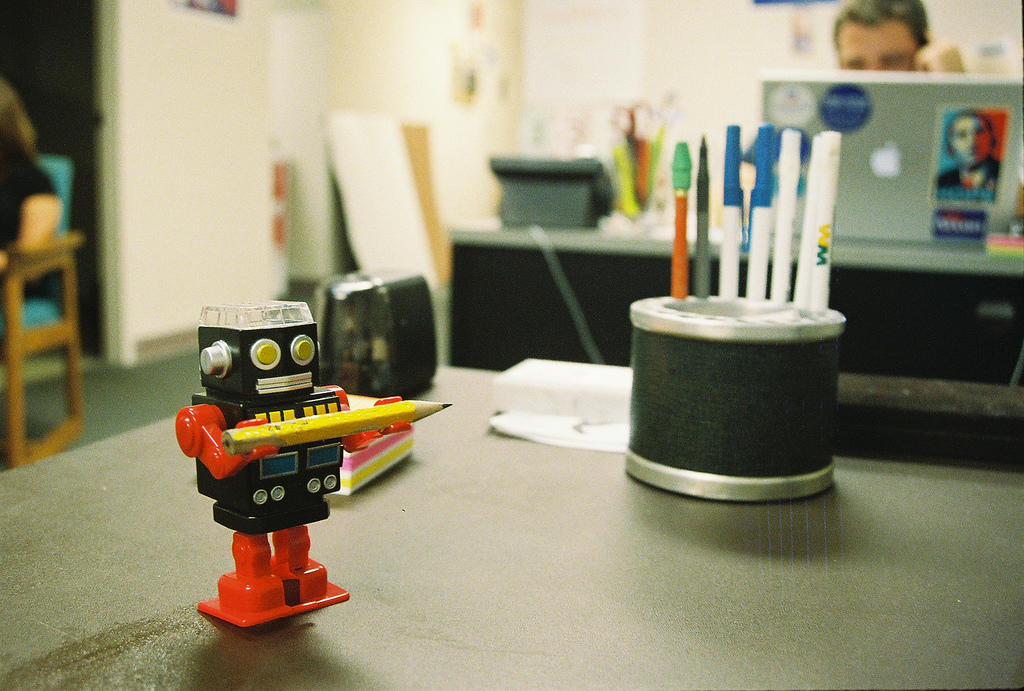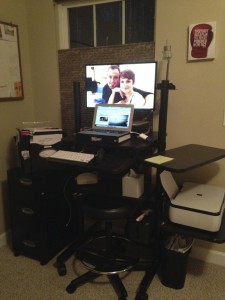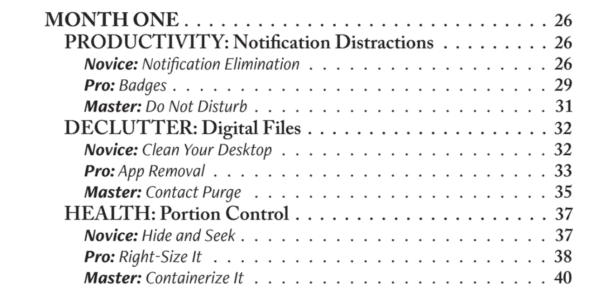You work from home and you never shut down.
How can working from home be more distracting and less healthy?
When you let yourself become a Remote Working Robot.
Benefits to working remote:
- No distractions from colleagues stopping by your desk
- No temptations from the never-ending birthday and promotion cakes
- Guilt-free group lunches
- Less expensive for commuting, clothes and food
- Working hours that make sense for your energy levels (many companies still make you work specific hours, but it is a little more flexible).
- You can throw in a load of laundry or empty the dishwasher during a break.
Cons to working remote:
- Your work is never gone. It calls you from the office, kitchen, and laundry room.
- People expect you to answer email and phone at all hours.
- You don’t have as much of an excuse to get up. The steps you take are fewer from office to kitchen/bathroom than from the parking lot to your desk.
- Staying in your pajamas all day or otherwise not looking at least presentable for the UPS driver can subconsciously put you in a funk.
When I worked remote for corporate I had to prep my food for the week even though I was one flight of stairs away from my kitchen. I didn’t have time to fix meals because I was on back-to-back calls and sometimes delivering training. I would have to eat while working or listening to yet another meeting. I still got up at 5:30 or 6 to make sure I was done working out in time for 8 or 8:30 calls and sometimes didn’t have time to shower until the afternoon.
Try incorporating some of the following techniques to be healthy and productive while working remote. No one has to know but you.
- Check email at regular intervals but don’t check it all day. Have a defined start time which signifies you are in work mode and when you shut down for the day. Really shut down.
- Get your work done when you say you’re going to in order to eliminate micromanaging. This can help with getting a little more flexibility in your hours.
- Pretend you have a child waiting for you at the bus stop at a specific time of day. People that have children don’t get as much push-back when they have to leave at a certain time. SINKs and DINKs need to pretend that their kid is freezing at the bus stop or they’re being charged by the minute at daycare and end their work day with a sharp transition.
- Create a transition ritual. Whether that’s a 2-minute meditation when you start and end work (this is mine), doing 25 squats and pushups, or rewarding yourself by checking social at the end of the day, choose something that becomes a clear indication you are starting/stopping.
- Prep and make meals for the week so you aren’t grabbing a Lean Cuisine or worse (is there worse?). Act as if you have to take your lunch with you every day so you have plenty of options to grab. I’m never surprised how many people that work from home work through lunch. If you have to, get a dorm fridge and stock it with water, hangry snacks or maybe even your lunch for that day. I typically have smoothies on nights I have several client calls.
- Take energy renewal breaks every hour or two. Take a walk outside (if you can do a walking meeting while talking on your cell phone, that’s ideal if you are on a tight schedule), do 50 squats every hour on the hour, practice balancing moves while on a call, run up and down your steps after every email processing time or take a 5-minute hoop break (my renewal of choice). If you feel like you don’t have 30 seconds to drop and do some push-ups, then that means you probably need to do it even more.
- Get a standing desk with an option to sit when you are tired. You can burn as many calories in a year as running a marathon. Plus, it keeps you more alert.
- Take a shower. Get dressed. It makes me sad to hear people still being in their pajamas at noon. There’s something about actually ‘getting ready for work’ that will put you in that zone. I’m not talking dress up and fix your hair, but at least get out of the clothes you slept in. Sometimes I may end up in my workout gear for a couple of hours but I’m definitely in alert ‘Let’s Go’ mode for my day.
Working from Home in the Coaching Industry
Advancements in technology mean that there many things that you can do from the comfort of your home including telecommuting. If you are planning to practice your profession as a coach without leaving the house, all you need are basic equipment such as a camera, computer, phone and a good Internet connection. As a coach, you can work with clients using instruction materials that you can send through emails and live video tutorials. It is also possible to arrange face-to-face meetings if needed.
The benefits of working from home are enormous. The absence of commutes, office politics and long meetings imply that you have more time for yourself and the family, balancing personal life and work better. Less stress and tension will improve your productivity & output and physical and mental health as well as functioning. However, like any other situation, working at home has its drawbacks, too. Here is a detailed explanation of the pros and cons of working from home.
Working from home doesn’t have to result in weight gain, lethargy and zombie brain from never shutting it off or leaving your desk.
What techniques do you use or will you start using to avoid Remote Worker Robot disease?



